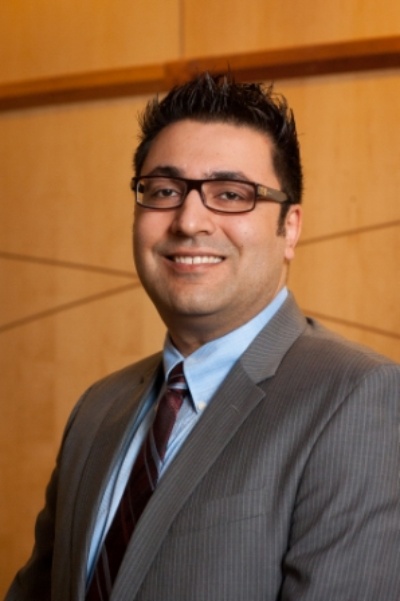Dr. Sachin Katyal, PhD
Modulating DNA Damage repair mechanisms to enhance brain tumour treatment success
DNA strand breaks occur on a daily basis in cells due to cell stress, environmental factors, oxidation and metabolism. Damaged DNA is resolved by dedicated DNA damage response (DDR) and repair mechanisms in order to preserve genomic integrity and cell function. The goal of conventional chemotherapeutic drugs and radiotherapy is to elicit DNA damage to overwhelm the tumour’s innate DDR and induce cell death. However, tumour cells have remarkable ability to respond to DNA damage, repair and adapt thus allowing survival and eventual drug resistance. It is predicted that >90% of all tumours incur at least one defect in the DNA damage response (DDR), thus tumour cell survival relies upon enhanced activity of other compensatory DNA repair pathways. The aggressive and deadly brain tumour, glioblastoma multiforme (GBM) shows a very high level of recurrence due to emergence of chemo/radio-resistant tumour cell populations; patients usually live about 1 yr from their date of diagnosis. We are identifying the “back-up” DNA repair pathways in these deadly brain tumours so that we can enhance the patients’ treatment success and their quality-of-life.
DNA repair pathways are guardians of the cellular genome.
Every individual human cell is estimated to incur tens of thousands of DNA strand breaks due to environmental stress, oxidation, metabolic function and DNA decay. To preserve genomic integrity, these breaks are resolved by dedicated DNA damage repair (DDR) pathways that ensure faithful transmission of genomes in dividing cells to ensure proper cell function and survival. There are two classes of DNA strand breaks, double-strand breaks (DSBs) and DNA single-strand breaks (SSBs), which are resolved by specific repair pathways, DSBR and SSBR. The inability to properly process and repair SSBs can interfere with the DNA replication and transcriptional machinery resulting in persistent SSBs, formation of the particularly genotoxic DNA double-stranded break (DSB) lesion and aberrant gene expression resulting in a variety of cellular pathology, including: senescence, cancer and apoptosis. It is known that the diverse mechanisms involving cell cycle regulation, DDR pathways, cellular metabolism, and cell death act in concert in response to DNA damage. As such, cellular life and death decisions are balanced by these mechanisms as defective DDR in proliferating cells, including neuroprogenitors, can lead to cancer, while defective neuronal DDR can lead to neurodegeneration.
Anti-tumorigenic agents overwhelm cellular DNA repair responses with lethal levels of genotoxicity.
The objective of common front-line radiation and chemotherapeutic strategies used in the treatment of brain tumours is to induce DNA breaks so as to overwhelm the cellular DNA repair machinery thus promoting genomic damage and tumour cell death. However, as the intrinsic cellular DNA repair process counteracts the therapeutic efficacy of this strategy, high radiation and drug doses are required which result in harmful neural and systemic side effects. My research seeks to identify ways to dysregulate cellular DNA repair pathways in tumours and improve therapeutic success. In this regard, DNA damage repair pathways are an ideal clinical target as we can specifically kill cancer cells by lowering the radio- and chemotherapeutic threshold of tumour cell genotoxicity by inhibiting redundant DNA repair pathways.
My research uses advanced molecular, biochemical and genetic techniques to gain insight into the biology of mammalian DNA strand break repair pathways. My goal is to identify ways to manipulate these pathways to develop novel treatment strategies in the clinical management of cancer. We are seeking a very highly motivated postdoctoral fellows (with a strong history of previous success) to join our team.
Contact information:
675 McDermot Ave
Winnipeg, Mb R3E 0V9
ph.: 204-787-2765, fax: 204-787-2190
Email: Dr Sachin Katyal PhD


